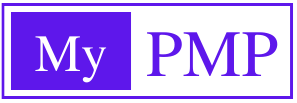Configuraton Management Plan
A configuration management plan (CMP) is a document that describes how a project team will find, track, and handle changes to project products like hardware, software, paperwork, and other artifacts. Here are some things that might be in a plan for managing configurations:
1. Configuration management goals: This section explains what the plan for configuration management is for and what its goals are.
2. Configuration identification: Explains how to find the configuration items (CIs) that will be tracked, such as hardware, software, documents, and other artifacts.
3. Configuration control: Explains how changes to CIs will be managed, including how changes will be asked for, reviewed, accepted or refused, and put into place.
4. Configuration status accounting: Explains how configuration status will be tracked and reported, including how configuration status reports (CSRs) and other tracking tools will be used.
5. Configuration audits: Describes how to do configuration audits to make sure that the current state of the configuration items fits the intended state.
Tools for managing configuration: Lists the tools and software that will be used to handle configuration items and keep track of changes.
7. Configuration management roles and responsibilities: Defines the roles and responsibilities of team members involved in the configuration management process, such as the configuration manager, members of the change control board (CCB), and users.
8. Configuration management training: Figures out what project team members need to learn about the process and tools for configuration management.
By having a configuration management plan, project teams can make sure that changes to project products are controlled and managed well. This lowers the risk of mistakes, delays, and other problems that can happen when changes aren’t tracked and managed well.
Key Points
– A Configuration Management Plan is a guide for keeping track of multiple versions of objects in a project, similar to a librarian’s guide.
– It describes how to organize and save documents, files, and updates.
– It’s similar to having a system in place to organize and identify all key papers and files in a way that everyone understands.
– It ensures that everyone is utilizing the most up-to-date versions of documents and components.
– Consider it a precise plan for managing and controlling the project’s critical files and modifications throughout its life cycle.







